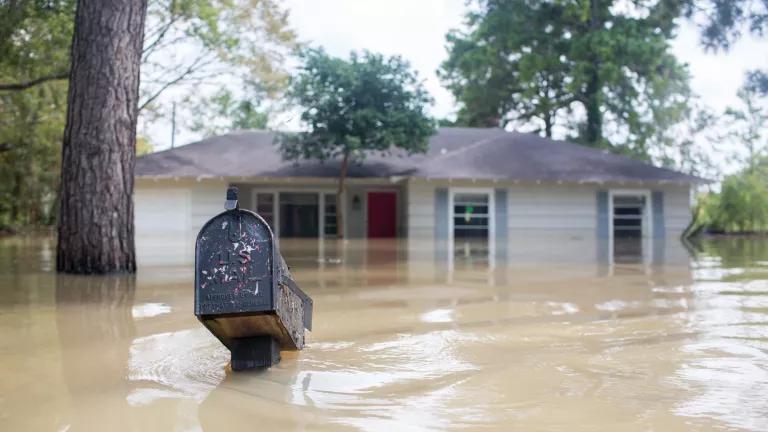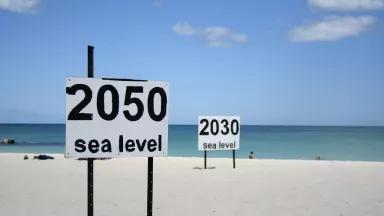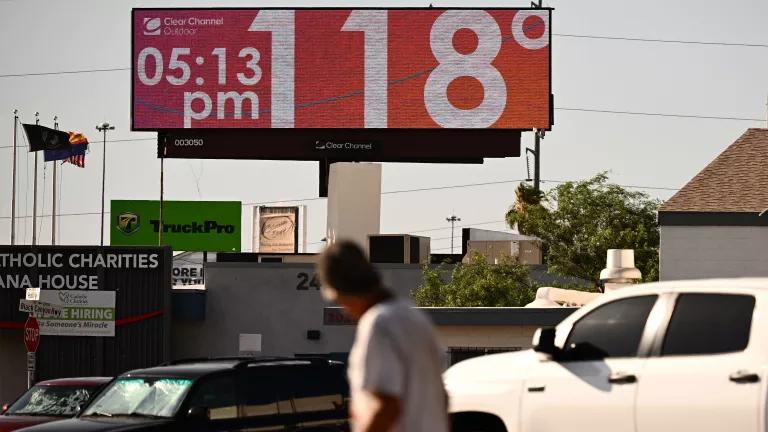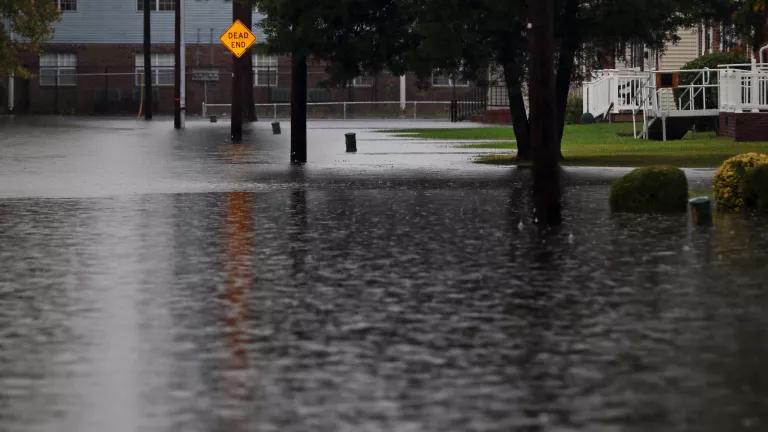Losing Ground: Severe Repetitive Flooding in the United States
There are many ways that homes can be made safer from flooding, but the U.S. government’s efforts are not keeping pace with increased flood risk.

A Houston, TX home flooded by Hurricane Harvey in 2017, which is the local jurisdiction with the most severe repetitive loss properties in the nation
Revolution Messaging
This page has been updated to reflect the Losing Ground dashboard’s November 2023 revisions.
Every year, more and more Americans find their homes underwater and their lives upended by flooding. For many, this has become a yearly occurrence. As climate change continues to raise sea levels and drive increases in extreme weather, areas vulnerable to flooding are expanding rapidly. Meanwhile, people continue to build in risky areas, often without considering how conditions may change over a building’s lifetime.
There are many ways that repeatedly flooded homes can be made safer from flooding, but the federal government’s efforts to help people and communities reduce risk are not keeping pace with the increasing danger. The result is a steadily growing number of properties that flood over and over again, resulting in disrupted lives and damaged homes. In particular, low-income communities and communities of color bear the brunt of flooding impacts and have the least access to the resources and support needed to reduce those impacts.
The National Flood Insurance Program (NFIP) was created in 1968 to provide affordable insurance against flood risk and decrease overall risk across the country. Since then, nearly 45,000 properties have met the criteria to become what the program refers to as Severe Repetitive Loss Properties (SRLPs). These properties, the most flood-prone structures insured under the NFIP, have flooded about five times each, on average.
Steps should be taken to mitigate flood risk for the occupants of these properties, such as elevating the buildings or helping the residents relocate. Funding for such steps might come from federal grants, state or local programs, or sometimes, from NFIP coverage. However, less than one-quarter of homes that have been designated as SRLPs have received assistance for reducing flood risk. And as flooding increases each year, the number of SRLPs only grows.
Even more concerning is the number of SRLPs that are no longer insured under the NFIP because the owners have dropped coverage—including for properties that have not yet received any flood mitigation assistance. These properties almost certainly still face high flood risk, but the residents no longer have a safety net to help them recover, likely because they can no longer afford coverage. As of December 2022, more SRLPs had become uninsured than those that had had their flood risk mitigated via elevations, buyouts, or other methods. This can create the appearance of risk reduction efforts being more effective (or there being fewer properties awaiting mitigation) than is actually the case.
It is painfully clear that the federal government is failing to protect current homeowners in flood-prone areas, and climate change will only increase the number of repeatedly flooded properties. According to data from FEMA, between 2013 and 2022, the NFIP paid an average of $2.8 billion per year (not adjusted for inflation) to cover flood-related losses. To avoid even greater losses—not to mention protecting the safety and health of millions of households—the nation must do better at addressing flood risk.
Severe repetitive loss data
The first step in addressing flood risk is understanding the current scope of the problem. However, data on flooding can be surprisingly hard to find. For years, there have been no publicly accessible data showing where SRLPs are located and how many have received mitigation assistance.
Previously, NRDC obtained data from the Federal Emergency Management Agency (FEMA) on all SRLPs in the United States as of May 31, 2018, and used that to create the first version of our Losing Ground dashboard. As of early 2024, the dashboard now contains data through December 11, 2022. Losing Ground shows the number of SRLPs in each state and NFIP participating community, as well as trends in SRLPs over time: how many properties qualified as SRLPs; how many were mitigated; and how many dropped insurance without mitigation.
Use the filters at the top of the bar chart to select your state or NFIP participating community, or hover over the left of the map to see a menu that will let you zoom and pan to a specific location. The main bar chart shows the timeline of mitigated, insured, and uninsured SRLPs. The tabs at the bottom of the dashboard show the NFIP flood zones of SRLPs in the selected location, as well whether the SRLPs predate or postdate local flood maps—in other words, whether they were subject to floodplain management regulations when they were built.
For more information on the data and the dashboard, visit our Frequently Asked Questions.
Download FEMA’s SRLP data here.
What can we do about repetitive flooding?
Like all problems linked to climate change, we need multiple solutions to address the issue of repeatedly flooded properties.
Federal, state, and local governments should increase the amount of funding available for flood risk mitigation and invest in building local capacity so that communities can access that funding and put it to good use. It’s also critical to streamline application processes, reduce waiting times for grants, emphasize action before the next disaster strikes, and make it easier for everyone to get and understand flood risk information. Funding should prioritize benefits for communities of color and other communities left behind by our nation’s disaster response and recovery programs. A September 2020 report from the U.S. Department of Homeland Security’s Office of Inspector General points out several improvements that FEMA must make to provide more timely and equitable mitigation assistance.
In addition, we need to comprehensively reform the NFIP. Currently, the program relies on outdated maps and rules that don’t account for climate change. Congress must update the NFIP to accurately reflect flood risk, provide more accessible data, enforce stronger codes and standards, and allow FEMA to make flood insurance more affordable for those who need it most. As the U.S. Government Accountability Office pointed out in a recent report, increasing mitigation alone won’t solve the problem if the NFIP continues to incentivize risky actions.
At the local level, we also need to stop building in harm’s way. Nearly one in five SRLPs were built after the publication of local flood maps—when we should have known better. And new development in risky areas is still increasing, with populations growing faster in floodplains than elsewhere. The best way to stop repeated flooding is to not let it start in the first place.






